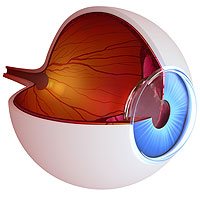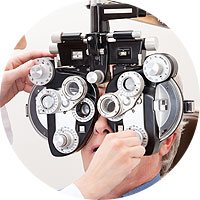
To remove cataracts, you need to go through cataract surgery. Getting cataract surgery is about more than just removing cataracts.
Having a cataract affects the entire lens of the eye since it causes the lens to become cloudy. This makes it necessary to remove the entire lens.
Without a lens, it would be impossible to see, so the lens is replaced with an artificial intraocular lens or IOL.
IOLs come in many different forms, and which kind is best for you is up to you and your surgeon. This is a decision you will both come to a decision about during your cataract surgery screening.
You can schedule one of these screenings at Eyecare Specialists in Bloomsburg, PA. Keep reading to learn more about your IOL options!
Monofocal IOLs
The simplest option, monofocal IOLs are the most basic IOL available. With a monofocal IOL, you can see, but you need to wear glasses. Monofocal IOLs can only correct for one distance, either near or far.
Your surgeon may be able to use a technique that can let you get by with monofocal IOLs. This method is called monovision. With monovision, two different monofocal IOLs are implanted in each eye.
This allows the patient to have a functional vision at more than one range. With monovision, you can subconsciously change dominant eyes.
But this method can be difficult to get used to and is not as effective as the premium IOL options.
Multifocal IOLs
Multifocal IOLs work by focusing light based on how the light passes through the IOL. Different zones on the IOLs have different focusing powers, much like bifocal glasses.
Multifocal lenses are a very popular version of premium IOLs.
Accommodating IOLs
Accommodating IOLs also correct for both nearsightedness and farsightedness simultaneously. But the way they do this is very different. Accommodating IOLs behave the most as a natural lens would. Rather than having different focusing powers, the IOL moves inside the eye.
This movement is like a natural lens. This leads to a smoother transition when moving from different focal depths.
Toric IOLs
Toric IOLs are designed for people with astigmatism. These IOLs must be custom designed and implanted precisely.
With astigmatism, patients have an irregularly shaped cornea or lens. This leads to blurry vision at all distances. Toric IOLs correct for this so patients can experience clear vision.
Aspheric IOLs
Traditional IOLs are actually much more symmetric than natural lenses. A natural lens is more oblong in shape, rather than round.
Using an IOL that isn’t the right shape can cause visual aberrations. Aspheric IOLs are less round in shape, which can make them a good choice for patients that are looking to drive at night. These IOLs can provide better night vision after cataract surgery.
Only you can decide what the right IOL is for you. It’s important to discuss all options with your doctor and get their recommendations.
Wondering if it’s time for cataract surgery? Schedule a cataract screening at Eye Care Specialists in Hazleton, PA! If you want to live without cataracts, having a cataract screening is the first step.

















